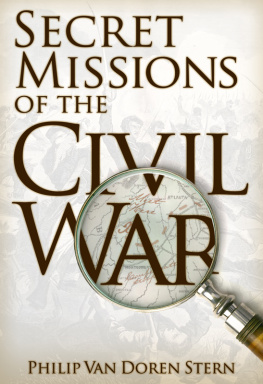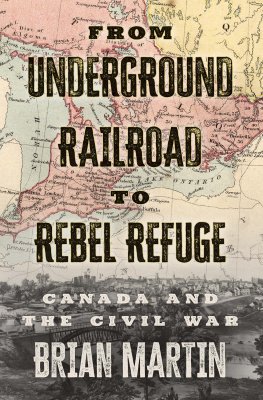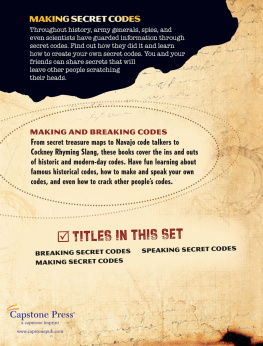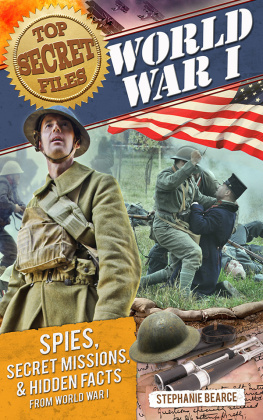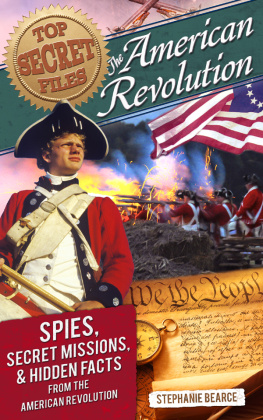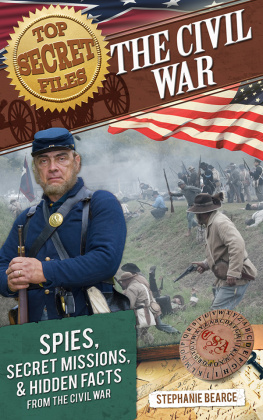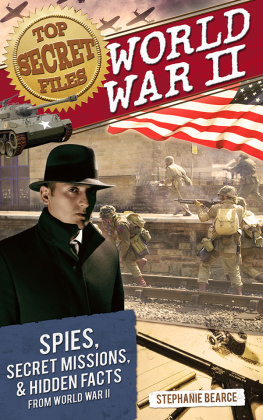by CHARLES P. STONE
by LAFAYETTE C. BAKER
by JAMES D. BULLOCH
by S. EMMA E. EDMONDS
by ADAM R. JOHNSON
by THOMAS H. HINES
by R. O. CROWLEY
by JOHN H. ALEXANDER
by JOHN W. HEADLEY
by W. B. CUSHING
by JOHN W. HEADLEY
by JOHN S. WISE
Introduction
I FIRST BECAME interested in the conspiratorial aspects of the Civil War in 1937 while doing research for a book on the assassination of Abraham Lincoln. At that time certain documents relating to Civil War history were still restricted. The Government felt that some of the people involvedor their immediate descendantsmight be living and that their reputations might be harmed by letting the public examine material that had to do with disloyalty, treason, court martials, espionage, or the other clandestine activities that are characteristic of the kind of warfare which goes on behind the lines in any period of armed conflict.
Americans, perhaps more than any other people, seem to believe that spying is a wicked practice indulged in only by the enemy, and that we, as honest, forthright citizens of a free nation, do not ordinarily engage in such underhanded work. This attitude has cost us heavily in the past and may again in the future. George Fort Milton, in his fine book, Abraham Lincoln and the Fifth Column, summed up this attitude: There seems something insidiously debasing about the business of being a spy. Such men play a two-faced game of false representation and connivance. They employ the general principle that the end to be servedthe service of their countryis so importantthat they are justified in almost any sort of conduct to carry out their task. Yet there is something inevitably corrupting and cankering attached to evil, whether the evil lie in the means or in the ends. Character can seldom stand up against these unseen assailants. Perhaps this is why many spies come to betray both masters. Moreover, the profession seems to have the almost inevitable accompaniment of the money itch. Almost never do these men become great heroes in the public mind, either during the war itself or inhistorybut this does not mean that they are free from hazard. At any moment the spy may be suspected, or detected and rushed to a firing squad. The dangerdiffers from that of combat on the battlefield only in that ... it hangs forever over the secret agents head. The fear is not of the bayonet, or the bullet, or the chance of capture by raid. It is that of sudden suspicion, secret betrayal, or chance blunder.
In 1953 the last of these long-suppressed secret service files of the Civil War were finally released in toto: today any qualified person can examine them in the National Archives.
I was allowed to go through the Lincoln Assassination files in 1937 when they were still in the custody of the Judge Advocate General. I have been through them many times since. They make fascinating reading, for one always feels that perhaps the very next document will cast new light on the many mysterious aspects of the Lincoln Conspiracy that still remain unsolved.
To go through all the Union and Confederate secret service records is quite a chore, since they are numerous, largely unsorted, difficult to read, often fragmentary, and in many cases exceedingly dull. Yet in them and in the allied records of the Union and Confederate Armies and Navies, the State and Treasury departments in the National Archives are literally thousands of dramatic and thrilling accounts, any one of which could be the starting place for a full-length book. Unfortunately, though, the material is all too often incomplete, so you may stumble across something that seems interesting but for which you can find no beginning or end.
You may discover, for instance, the record of a dispute about repaying $28.50 to a Federal woman spy, Mrs. Frank Abel of Baltimore, for buying mens clothing to use as a disguise. But that is all there is. Why this otherwise forgotten woman was prowling around the United States in wartime disguised as a man is not revealed. You will also find many references to the record book of Sheridans scouts, but the volume itself cannot be found. This is a great pity, because the free-ranging Union cavalrymen led by Sheridans chief of scouts, Harry H. Young, habitually entered the Confederate lines wearing Confederate uniforms, and their adventures and escapes would make lively reading. Perhaps the record book will turn up some day.
The Union secret service records take up many feet of shelf space. Many of them, especially the section with the eye-catching title Scouts, Guides, Spies, and Detectives, are still kept in the clumsy Woodruff file holders into which they were put in the nineteenth century. The Baker-Turner papers are so numerous that they have their own contemporary index. And then there are all kinds of miscellaneous documents. The accounting records for secret service funds disbursed in some parts of the country are very complete; they are missing entirely for other sections. Some of the correspondence of the Confederate commissioners stationed in Canada still exists. So do documents written in cipher or code. But despite the fact that these records are so voluminous, they represent only a small part of what was originally confided to paper by spies and undercover agents. And what was recorded was only a very small fraction of the secret information that was gathered on both sides. Most of itand probably the most interesting partwas never committed to paper at all, but was reported verbally. Much of what was written was immediately and purposely destroyed, or was burned up accidentally during the great conflagrations that devastated Richmond, Atlanta, Columbia, and other Southern cities during the war. Later, still more went up in flames when private individuals decided to destroy anything they thought might be embarrassing or incriminating.
After you have spent day after day examining such data in the National Archives, the Manuscript Division of the Library of Congress, and the other libraries which preserve documents of the Civil War period, you finally come to the conclusion that you have touched only the outer edges of a vast, murky area which must always remain largely unexplored.
Yet going through the records is absorbing work. The agents who turned in this information scooped up everything that came their way. Stored with the manuscripts is the brass seal of the secret filibustering organization known as the Knights of the Golden Circle, which the mysterious Dr. George W. L. Bickley organized before the Civil War began; this later became the Order of American Knights (OAK), the symbol for which was an ordinary oak leaf pinned to the lapel or passed on concealed in a closed fist in what seemed to be an ordinary handshake. All kinds of odd physical objects are scattered through the papers, including small copper stars of approximately the same size and shape as those worn on the shoulders of American generals to indicate their rank. These were probably used by members of the Order of the Star, a local Copperhead group centering in Ohio. Plans of fortifications made by spies are there; so are small packages of chemicals to be used for invisible writing.

